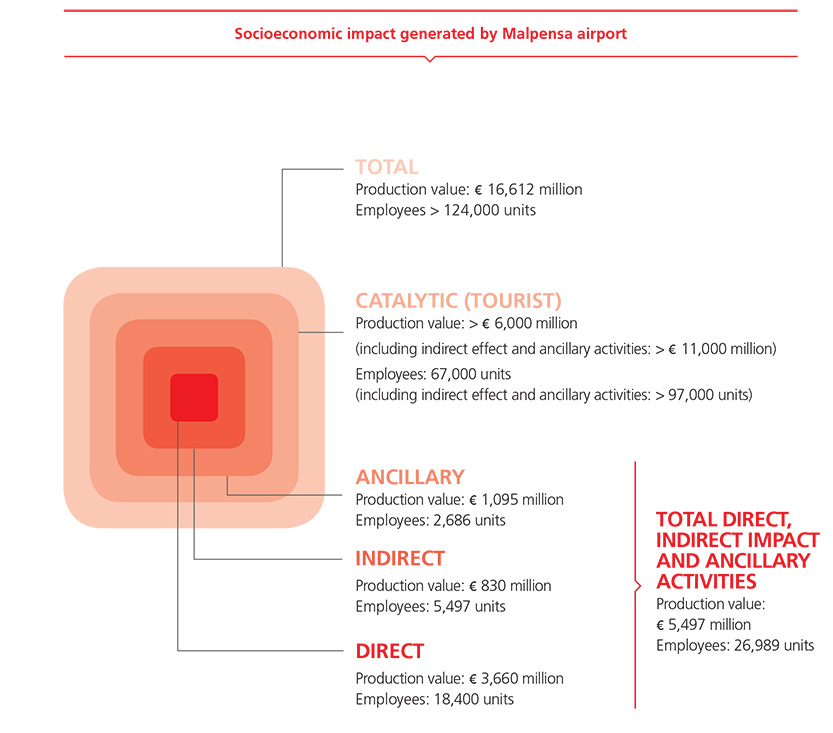Socioeconomic impact of Malpensa airport
In 2016, there were 546 on-site business activities at Malpensa Airport (482 in 2014). The list of activities taken into account corresponds to the list of companies requesting badge issues to operate within the airport terminal.
Based on data updated at 2016, Malpensa's production system generates repercussions on the Lombardy region quantifiable at 16.6 billion Euro, which corresponds to the ability to create about 124,000 jobs.
The airport's direct impact in terms of employment is quantified in approximately 18,400 created jobs (SEA accounts for 9.1% of the total figure) and a value of production of 3,660 billion Euro (of which 9.8 % is directly attributable to SEA). The value of production is the sum of the added value and final sector prices.
Local distribution of direct employment repercussions generated by Malpensa Airport was analysed by reclassifying the badges issued to employees based on their municipality of residence in the 2014-2016 three-year period. This analysis shows that over 70% of those employed are resident in Lombardy, over 6% in the neighbouring Province of Novara, and about 20% are resident outside the region.
Almost half workers are employed in the Province of Varese, where Malpensa Airport is based, while the CUV municipalities account for 17-18% of the employment generated by airport (37% of the employment directly generated by Malpensa in the Province of Varese).
Based on direct effects, we can calculate indirect and induced effects generated by airport using the multipliers (respectively Leontievian and Keynesian) produced by the regionalised input/output table.
The cumulative (direct, indirect and induced) value of production generated through the activity of Malpensa Airport is approximately 5.5 billion Euro, while the derived employment is close to 27,000 units.
Among the catalytic effects, tourism has been particularly assessed.

Source: CeRST-LIUC processing of SEA and ISTAT data